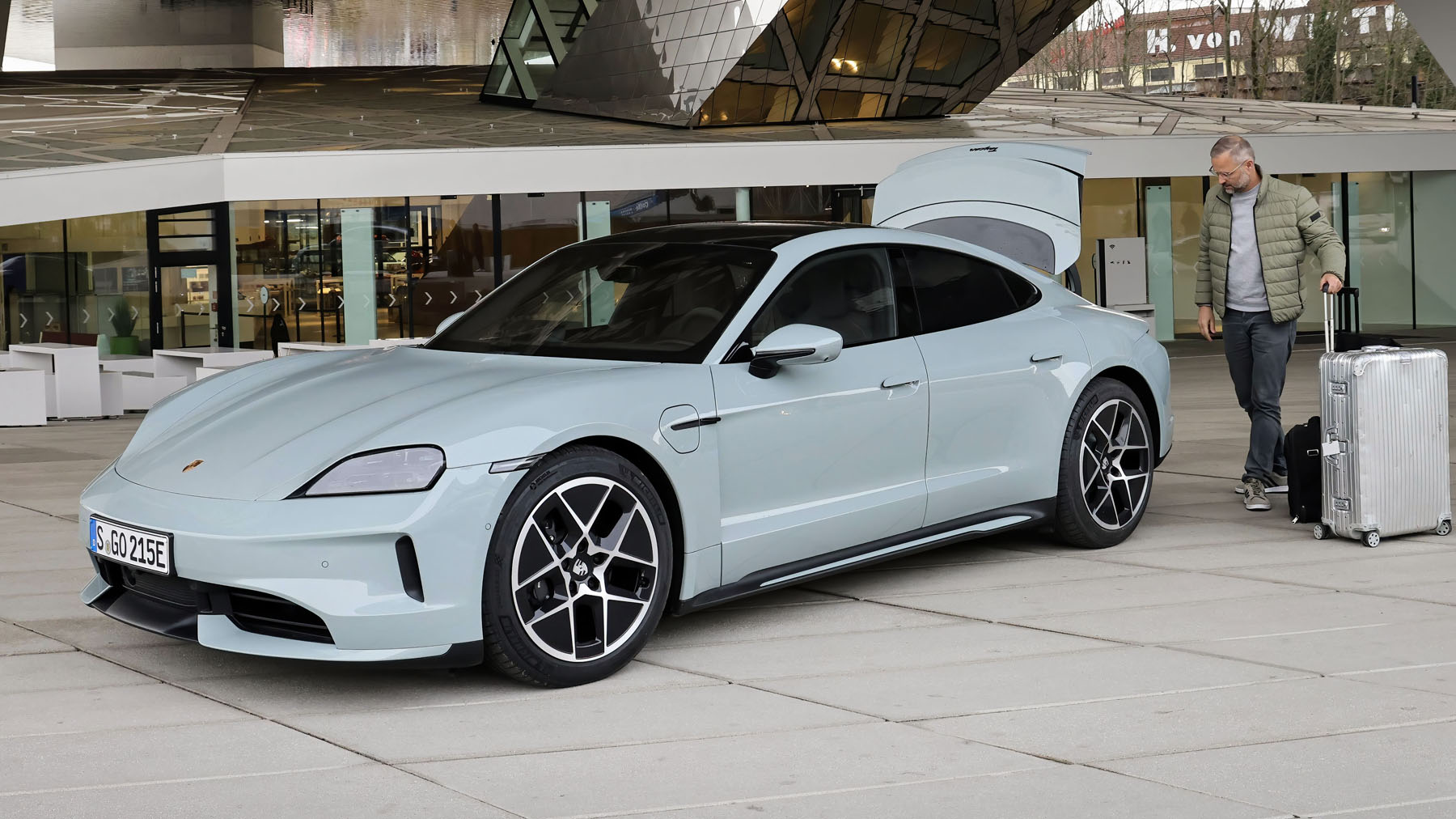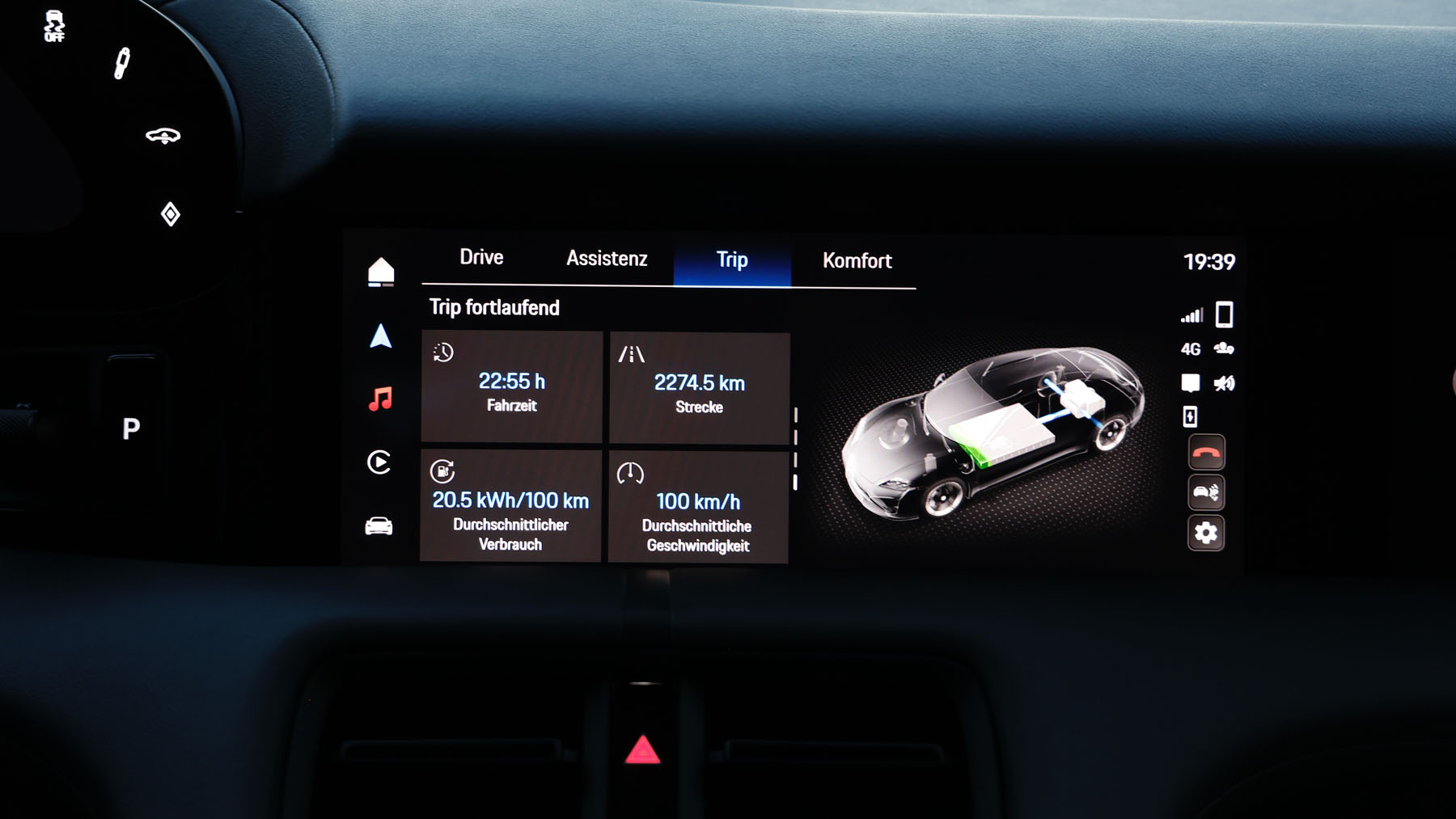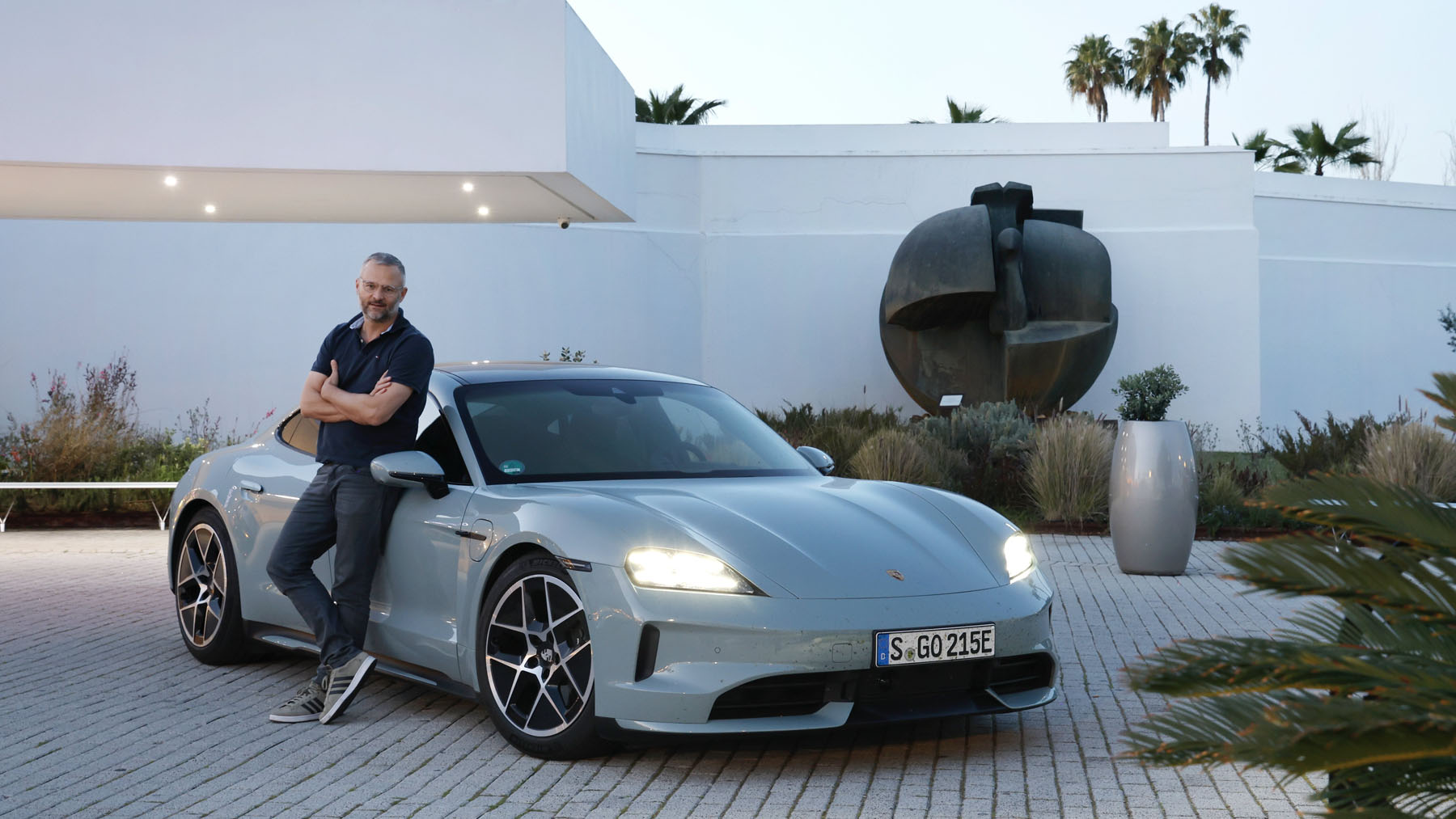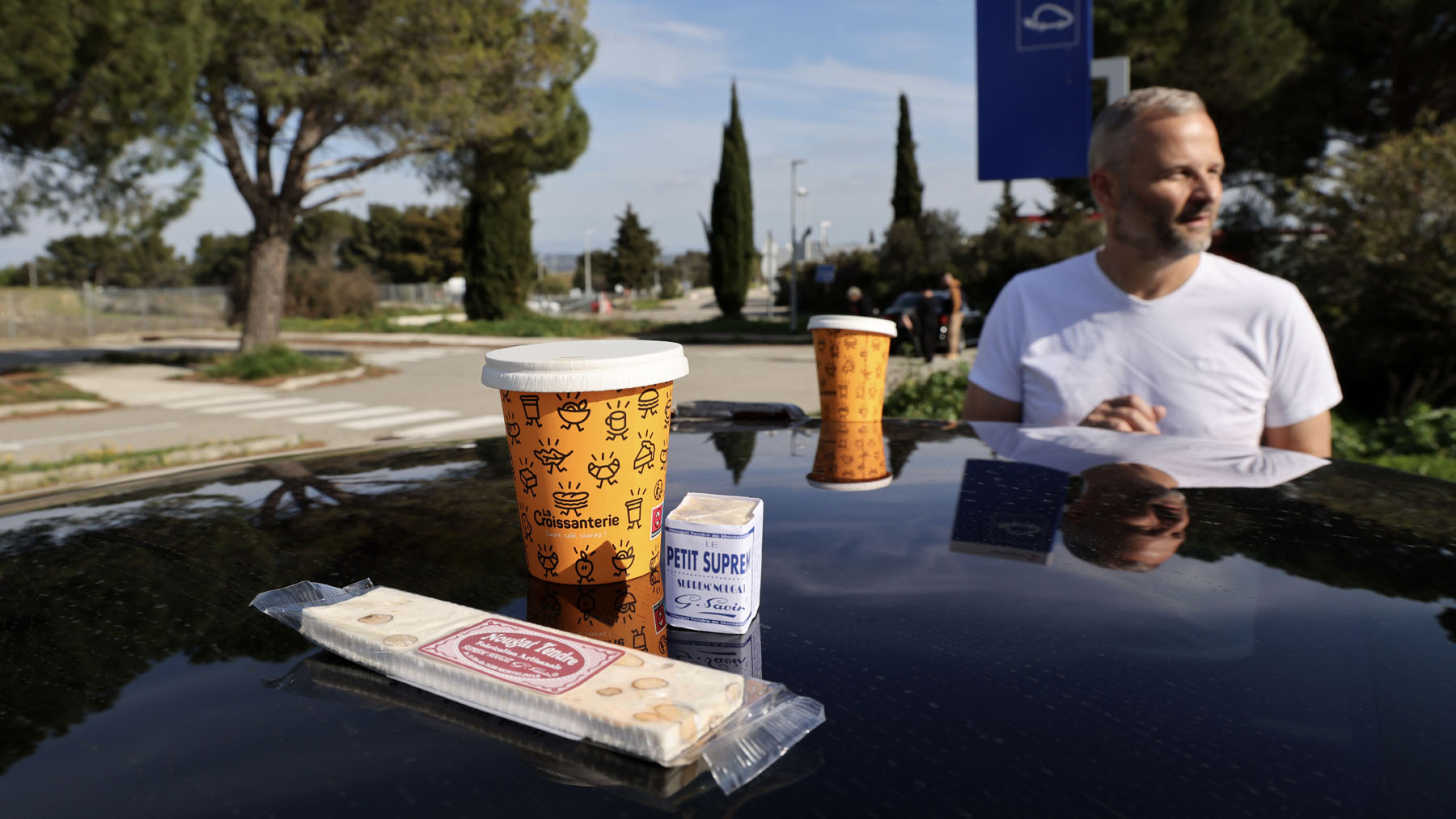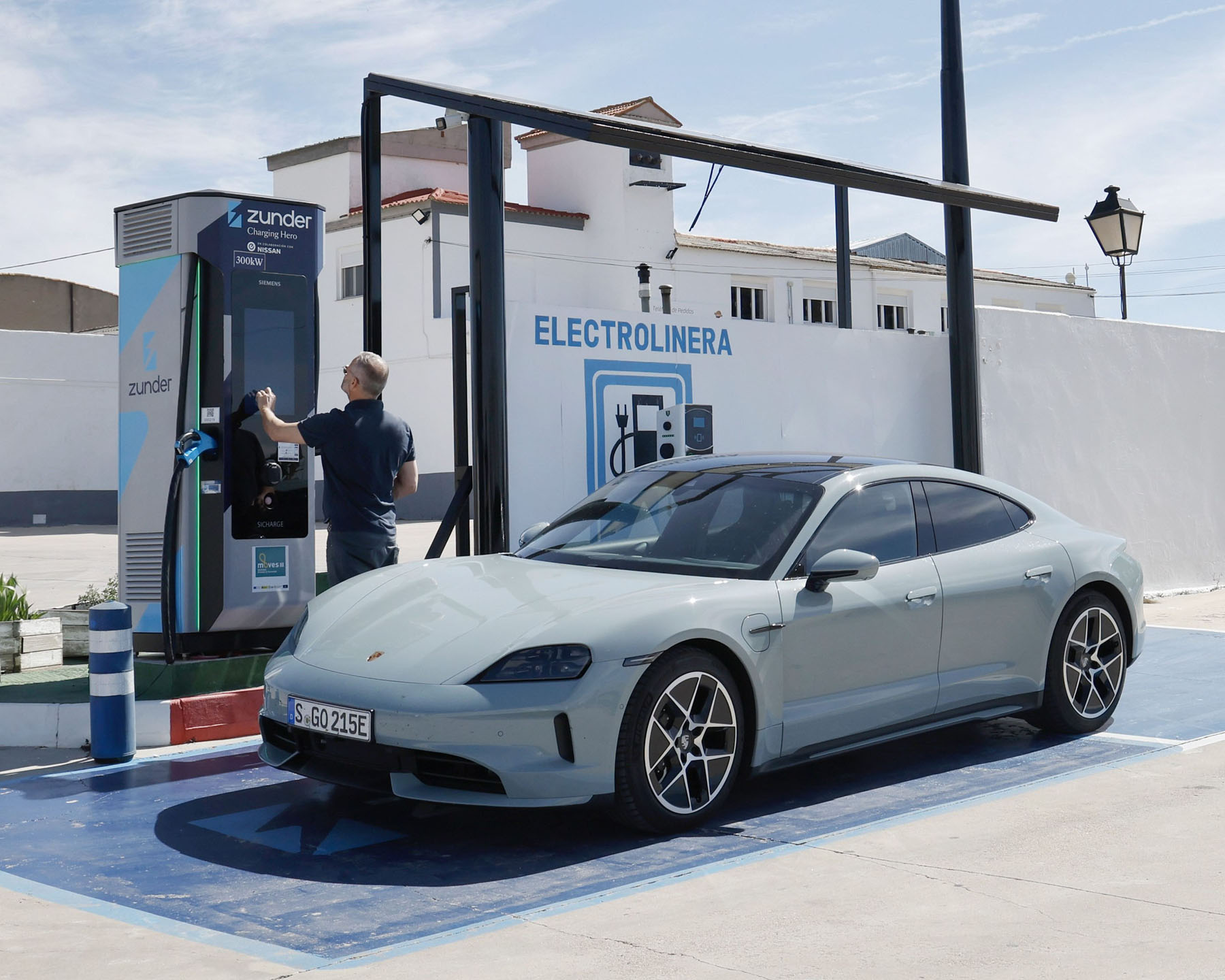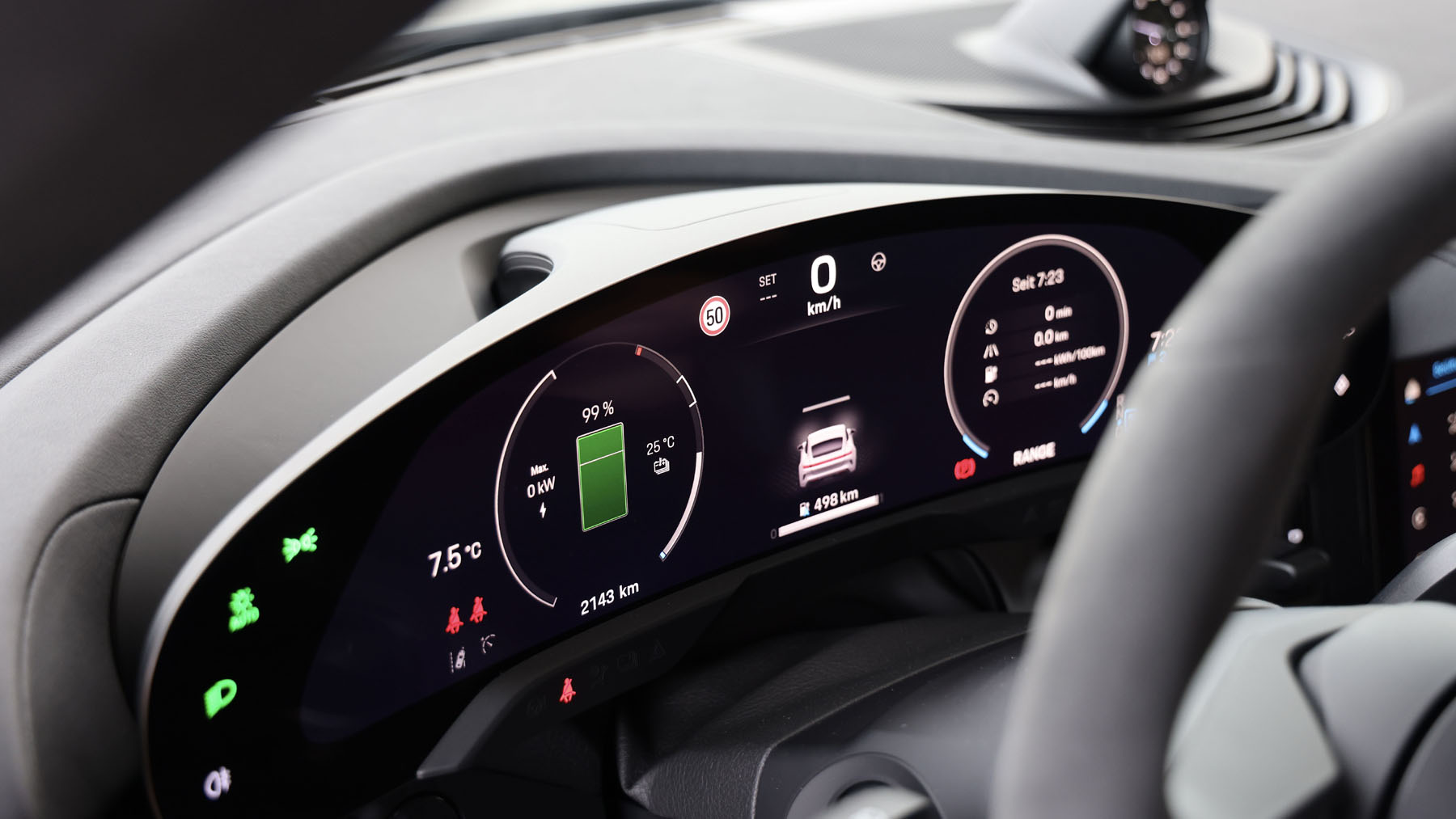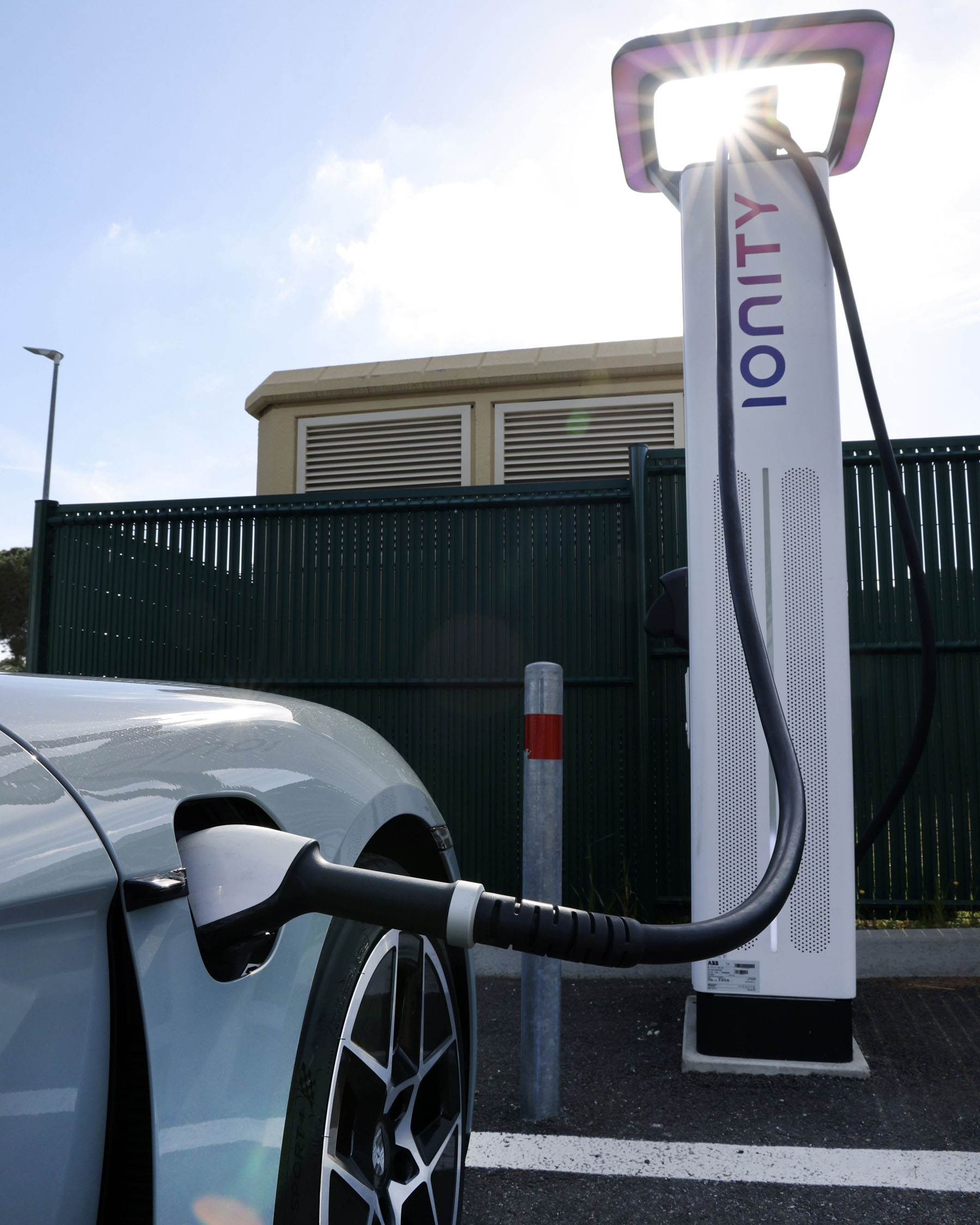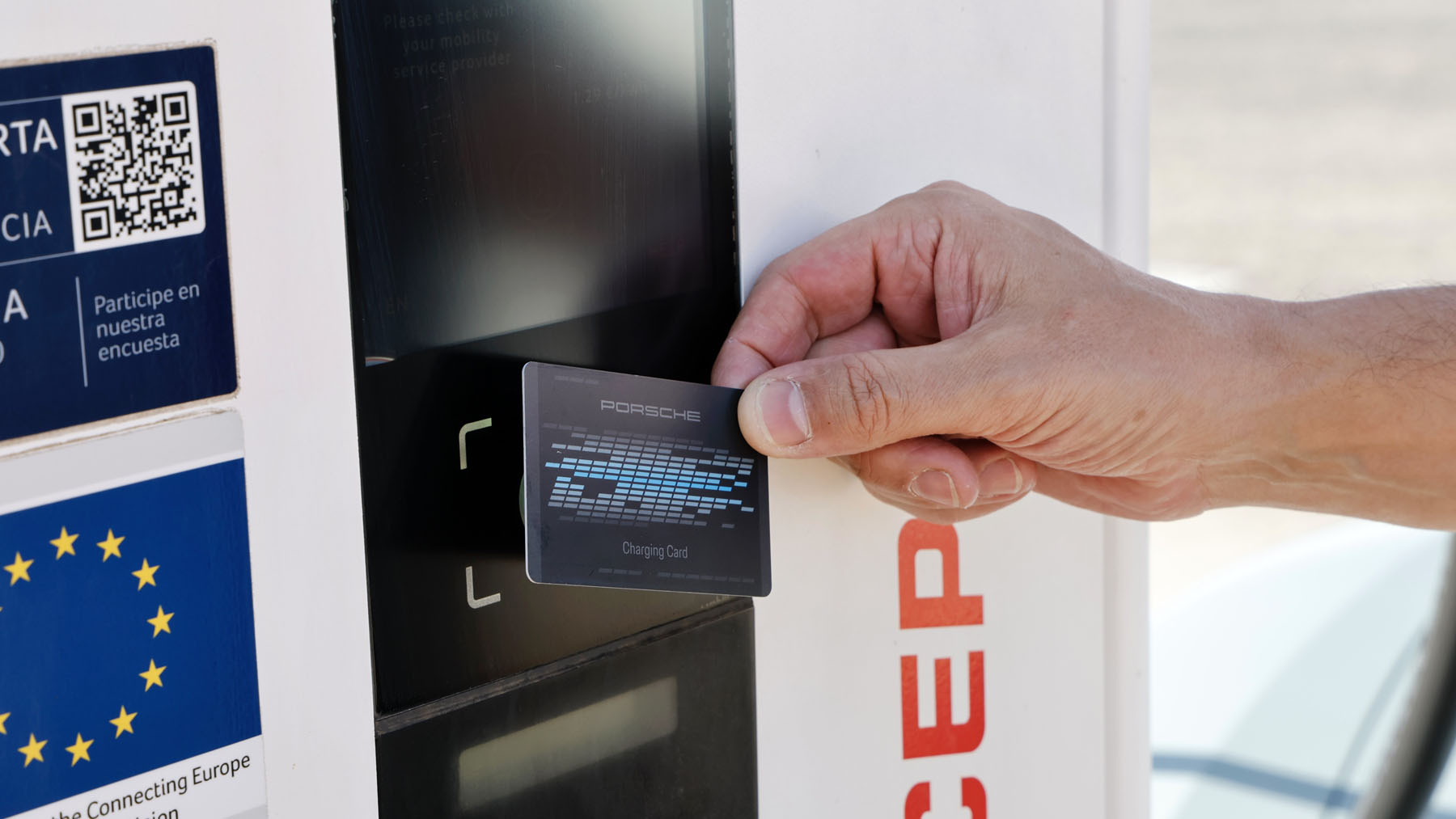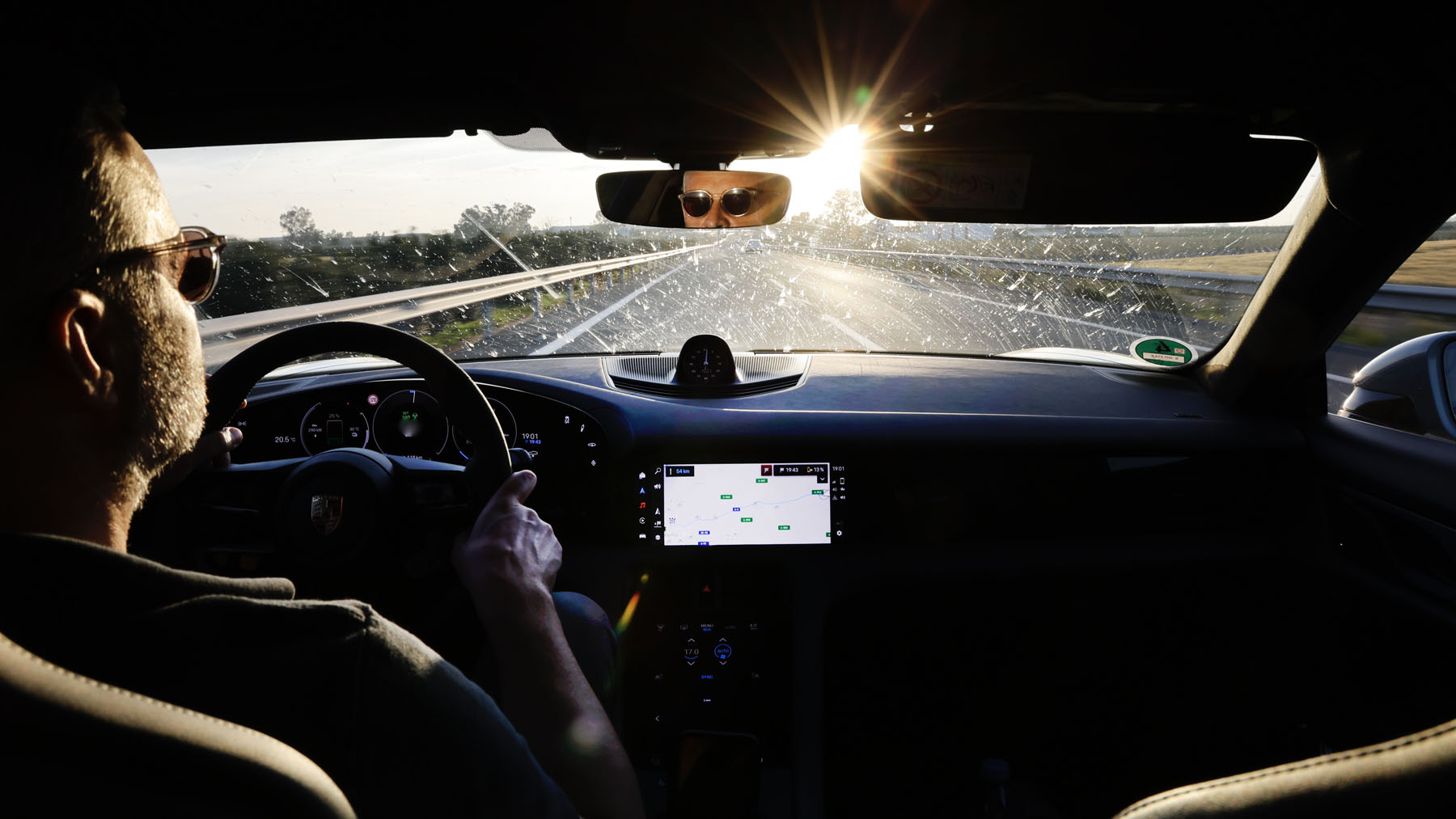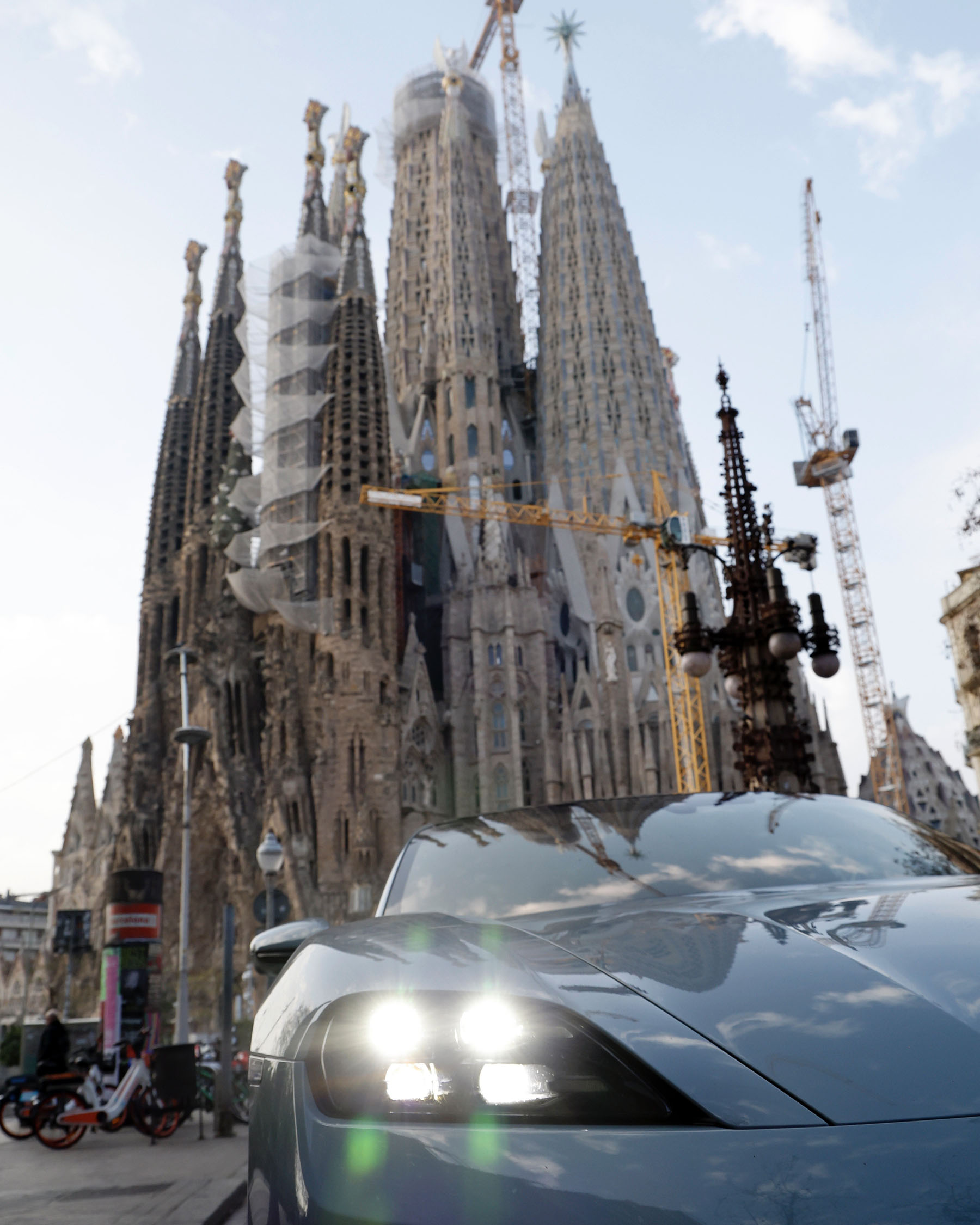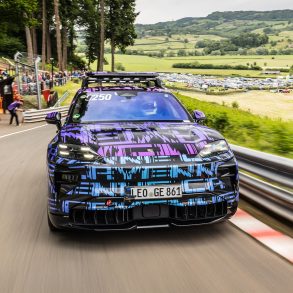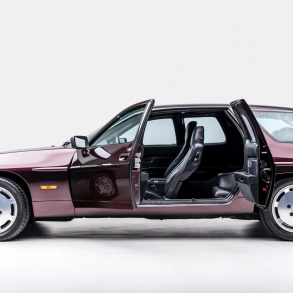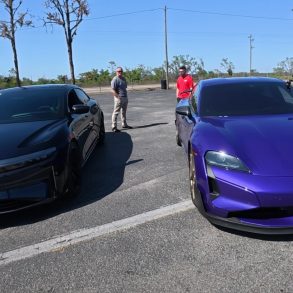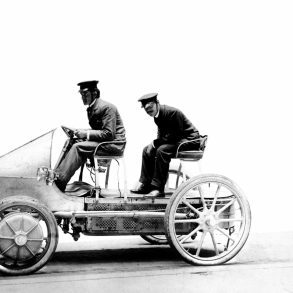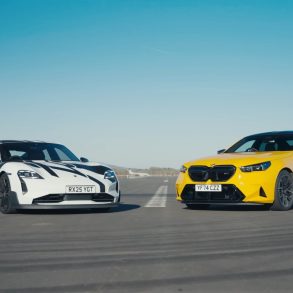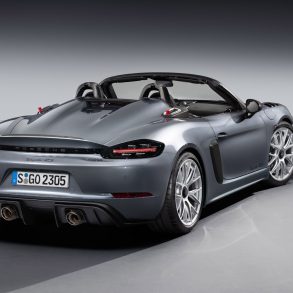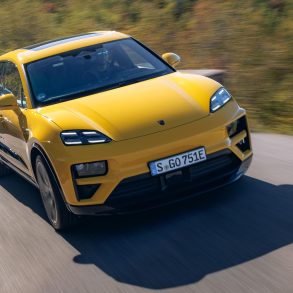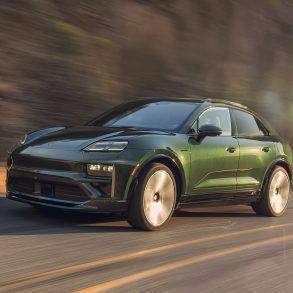Aiming for the sweet spot between speed, consumption, and charging infrastructure, Mayk Wienkötter, Porsche’s spokesperson for the Taycan and electromobility, traveled from Stuttgart to Seville. Oliver Blume runs across the forecourt of the Porsche Museum with a friendly wave and asks where we’re going. “Seville!” we reply. “Nice one – have a good trip,” he calls back.
From Stuttgart to Seville in just two days
There’s no better start to the day than your own CEO seeing you off. It’s Thursday morning, at 07:30. The sky is blue, but it’s chilly outside: only six degrees Celsius. The Taycan’s battery is at 99 percent, and we’re aiming to drive from Stuttgart to Seville in just two days. It’s a 2,300-kilometre trip. We’re not interested in hypermiling – maximizing efficiency by slipstreaming behind lorries. We want to get there as quickly as possible. The aim is to find the sweet spot between speed, consumption and charging infrastructure. We want to replenish the energy we consume from IONITY chargers wherever possible, for reasons of reliability and with a view to costs.
Also coming along for the ride is Porsche photographer Christoph Bauer. His job is to get the best pictures, while I try to get us to Seville as quickly as possible. We’re aiming for an average speed of 100 km/h. It takes us a while to get going. There’s already heavy rush hour traffic in Zuffenhausen, which does our average speed no good at all. On the A8 heading for Karlsruhe, the traffic clears and we get up to a steady 130-140 km/h. We’re driving in Range mode. The Taycan, with Performance Battery Plus and rear-wheel drive, rolls on 20-inch wheels. And it doesn’t short-change you either. Of the high voltage battery’s 105 kWh total capacity, 97 kWh are available for propulsion. Based on the WLTP, the range of the Taycan is 678 km.
We continue on the A5 towards Freiburg. By the time we cross the French border, our average speed is 114 km/h, thanks to there being hardly any traffic. We’ve got a transponder for the toll roads so that we can cruise through the toll stations at 30 km/h without having to stop each time to pay by cash or credit card. The barriers open automatically, which is also good for our average speed.
Break time
After 480 km, our first charging stop is due and we drive to IONITY Jura near Arlay in Burgundy. The remaining range is 35 km, which means that our actual total potential range is more than 500 kilometers. It has taken us just over four hours to get to this point. Seven CCS chargers are available and we are the only car there. Photographer Christoph goes to the service station to get lunch and drinks while I plug in to the charger and keep an eye on things, which isn’t necessary, because the Taycan can charge at up to 320 kW. After 10 minutes, there are already 50 kWh in the battery, and after 18 minutes, the charge level shows 80 percent. Almost too fast for a proper break. After half an hour we set off again.
Long-distance driving can be so relaxing
The temperature is now more than 20 degrees Celcius. I throw my sweater onto the back seat and carry on in my T-shirt. It’s beginning to feel like spring. Meanwhile, the Taycan performs as expected. The ride is comfortable, the electric drive almost silent and the forecasts of the Porsche Charging Planner are reliable. Long-distance driving can be so relaxing. The system plans the second and, according to our ambitious target, final charging stop for today in Tavel Nord near Avignon. When we arrive, we still have 42 km of range and a 10 percent state of charge (SoC). Four chargers are available, and all four are free. Normally, you never charge to more than 80 percent on long trips, but we want to get up to almost a full charge.
Almost 450 km left
That’s so we can go all the way to Barcelona, our only overnight stop on the route, which is still almost 450 km away. This means we can take a longer break, have something to eat and drink, and to stretch our legs. The Taycan performs well on long journeys when it comes to break times. But we’re not here for fun: we want to show what the new edition can do. According to the vehicle display, the charging station is delivering a slightly reduced charge, but given the amount of energy charged and the time it took, this doesn’t matter. After 35 minutes, we’re up to 95 percent. So off we go again. The first 1,000 km take less than nine hours. By this time, the excellent 14-way comfort seats are paying off. With its range and rapid charging, you can spend a long time sitting in the Taycan. We pass Montpellier and Narbonne as we head towards the Spanish border. There’s a speed limit of 120 km/h here: bad for our average speed, but good for consumption.
After almost exactly 12 hours, 1,260 km of electric driving, a consumption of 20.7 kWh and with 10 per cent residual SoC, we arrive at our hotel in Barcelona. In the underground car park, there are two AC chargers which guests can use free of charge. Unfortunately, the single-phase charger only delivers 3.7 kW. But we have 12 hours, so we plug in, check-in and get some well-earned sleep. The next morning, the display is at almost 50 per cent. It’s not ideal, but nor is it a major problem, as there is an IONITY station 100 km south of Barcelona. So first we do a bit of sightseeing. We visit the famous Sagrada Familia church, although it is still unfinished, with a completion date of 2026.
More than 600 IONITY stations
Because we’d rather get to Seville before then, we don’t hang about. Instead, we set off for Tarragona to the brand-new IONITY chargers at a fuel station on an industrial estate by the motorway. All six chargers are free and lit up green. Here too, the display shows that the charging power has been very slightly reduced from the maximum possible. We give ourselves a good half an hour to get back up to more than 90 percent, as despite having more than 600 stations all over Europe, the IONITY network gets somewhat sparser southwest of Valencia. At first, we regret having charged more than the standard 80 percent, but that decision later turns out to be the right one. So we planned our first stop at a non-IONITY charger, which posed an unexpected challenge.
The first charger just off the route promises 360 kW. We plug in and the verification process starts, but never stops. We unplug and try again, but the rather ancient charger won’t quit verification mode. No problem. Or so we think. There’s a 300 kW charging station from the same supplier nearby. This station is next to a petrol station and is much more modern. This is more like it. It’s a new Triple Charger, which means that you can charge with a CCS plug, AC or CHAdeMO. We just need to select the standard we want on the touch panel. Unfortunately, the capacitive surface doesn’t respond to our inputs. Slightly frustrated, we drive on. The Porsche Charging Planner suggests the next ultra-rapid charger along the route. Thanks to the significantly increased range and improved efficiency of the new Taycan compared to its predecessor, we get there with just four per cent left. We take 30 minutes to get up to 40 kWh – as much as we need to reach the next IONITY charger. A nice lunch and an excellent espresso at the service station reinstate the sense of calm, but the charging problems have cost us an hour overall.
Finish line in sight
We have less than 500 km to go until we reach Seville, but our average has fallen below the magic 100 mark. Because there is hardly any traffic, we get back up to a steady 120 km/h. At 16:30, we reach IONITY El Hidalgo, where three of the four chargers are free. It’s a textbook charging session, with the Taycan able to handle a rate of up to 327 kW. After 15 minutes we set off again. The final stretch is 333 km. The roads are so empty that we can go all the way at the speed limit. Three hours later, we arrive in Seville after covering 2,300 km in 23 hours.
We’ve achieved our 100 km/h average. On the way from Stuttgart to Seville, we had to charge every four and a half hours of driving time on average. Consumption averaged 20.5 kWh/100 km over the entire route. Despite the less than optimal, but constantly growing charging infrastructure, fast charging took less than 2.5 hours in total. Tired but contented, we come to our journey’s happy end.
All content © 2024 Dr. Ing. h.c. F. Porsche AG


